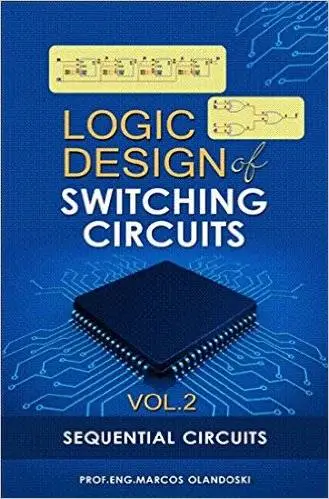Logic Design Of Switching Circuits - Vol. 2: Sequential Circuits by Marcos Olandoski
English | Feb. 20, 2016 | ASIN: B019H5VGRO | 42 Pages | AZW3/MOBI/EPUB/PDF (conv) | 41.93 MB
English | Feb. 20, 2016 | ASIN: B019H5VGRO | 42 Pages | AZW3/MOBI/EPUB/PDF (conv) | 41.93 MB
The content of this book was developed in order to attend the needs of a Text Book for the course of “Theory of Digital Electronics”.
This course belongs to curriculum of Electrical, Electronics, Telecommunication Engineering and Computer Science Bachelor Degrees. Also it belongs to curriculum of Electrical, Electronics and Computer Sciences Technological Degrees
The contents of the chapter’s doesn´t need any previous knowledge except mathematical and basic electricity of high school degree.
Because of the great amount of contents, the book is divided in two parts, Combinational Circuits (Vol. 1) and Sequential Circuits (Vol.2).
It is recommended 4 hours of theoretical classes per week for a semester of 17 week, divided in two groups of two hours each, or 2 hours per week for a year of 34 weeks.
This course doesn’t require laboratory classes.
In general this course is given in the same semester of “Digital Electronic Circuits”, that needs laboratory classes, and that needs knowledge of “Electronics Introduction” course.
The first chapter of Vol.1 presents definitions and basic mathematical structures. The following chapters (Vol.1) present the methods and algorithms of Combinational Digital Circuits, beginning with analysis and proceeding with synthesis. Some additional chapters complete the contents with Combinational Circuits Hazards and Iterative Networks.
In the second part (Vol.2) the book presents the knowledge of analysis and synthesis of Sequential Digital Electronics Circuits including Asynchronous and Synchronous machines.
Additional chapters complete the contents with types of commands and flip flops and various structures that are used in electronic digital projects.
The contents of this book are enough for the next course of “Microprocessors”.
A special attention is need to sections of solved and proposed problems in each chapter.
It’s recommended three intermediate tests and the final exam for a one semester course and four intermediate tests and the final exam for a one year course.



